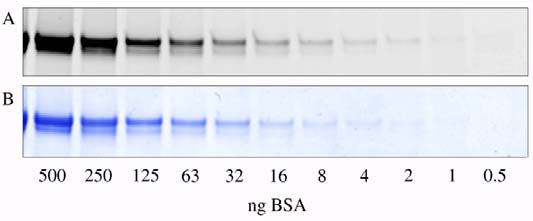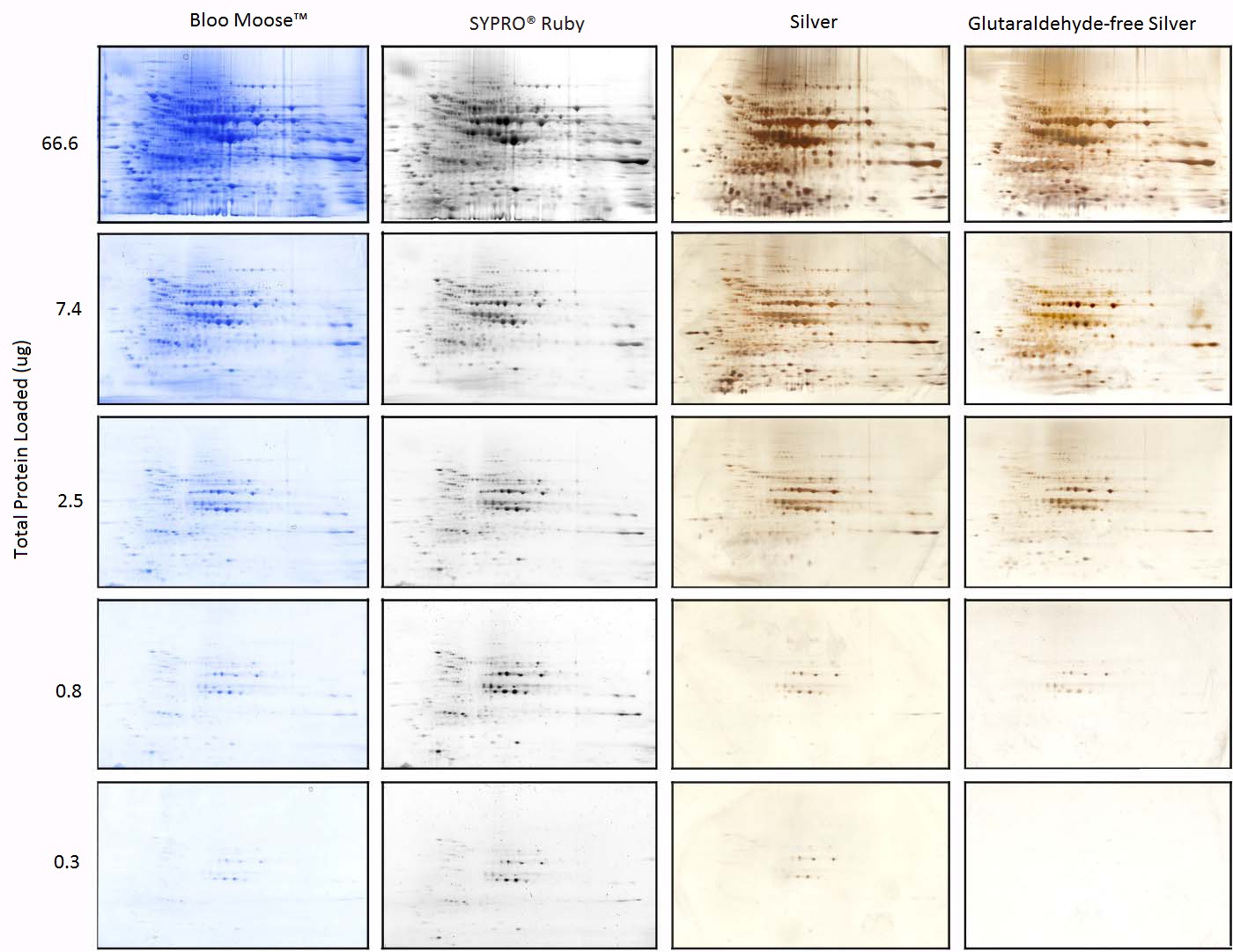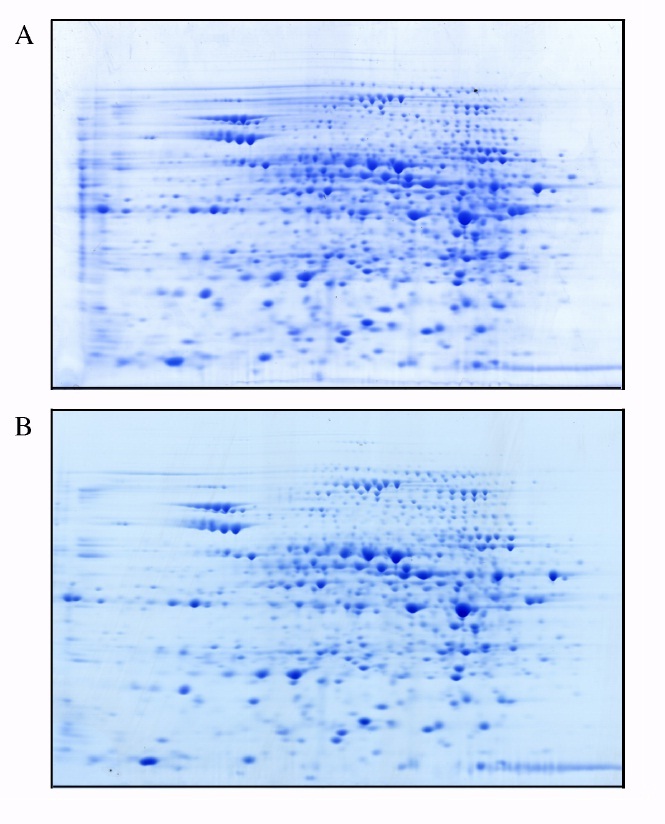Bloo Moose™ Staining Solution
The CoolMoosie Bloo™ Stain
Bloo Moose™ staining solution is a colloidal coomassie blue G-250 stain that is at least two times as sensitive as other colloidal CBB stains. With protein electrophoresis gels “equilibrium staining” occurs as the dye is converted from its molecular dispersed form to a large colloid that is precipitated, leaving the gel in a nearly clear solution. Gels can be immediately scanned and processed for mass spectrometry without prior destaining. The sensitivity of Bloo Moose™ staining solution is greater than GelCode® and between silver and SYPRO® Ruby stains, detecting as little as one nanogram or less.
One liter of Bloo Moose™ staining solution will stain 40-50 mini gels
 Bloo Moose Application Note
Bloo Moose Application Note
Bloo Moose Staining Protocol
BlooMoose Stain MSDS
Bloo Moose™ staining solution is a colloidal coomassie blue G-250 stain that is at least two times as sensitive as other colloidal CBB stains. With protein electrophoresis gels “equilibrium staining” occurs as the dye is converted from its molecular dispersed form to a large colloid that is precipitated, leaving the gel in a nearly clear solution. Gels can be immediately scanned and processed for mass spectrometry without prior destaining. The sensitivity of Bloo Moose™ staining solution is greater than GelCode® and between silver and SYPRO® Ruby stains, detecting as little as one nanogram or less.
One liter of Bloo Moose™ staining solution will stain 40-50 mini gels
 Bloo Moose Application Note
Bloo Moose Application NoteBloo Moose Staining Protocol
BlooMoose Stain MSDS
Specifications
| Product Type: | Buffer or Chemical |
| Storage: | Ambient temperature |
| Shipped: | Ambient temperature |
Documentation
SDS-PAGE serial dilutions of bovine serum albumin (BSA) stained with (A) SYPRO® Ruby and (B) restained with Bloo Moose? (below).

Serial dilutions of S. cerevisiae lysate at the indicated protein load were subjected to 2-dimensional gel electrophoresis and stained with Bloo Moose?, SYPRO® Ruby, or silver (below). SYPRO® Ruby fluorescence was measured at the maximum exposure time where no spots were saturated, from 5?20 seconds.

2-dimensional gel electrophoresis of E. coli lysate (below). Gels were stained with either (A) Bloo Moose? or (B) GelCode® Blue. In duplicate gels, 981.5 ± 4.5 spots were detected by Bloo Moose?; 762 ± 73 spots were detected by GelCode Blue.

References
- Kasap M, Ye?ena?a I, Akpinar G, Tuncay M, Aksoy A, Karaoz E (2015) Comparative Proteome Analysis of hAT-MSCs Isolated from Chronic Renal Failure Patients with Differences in Their Bone Turnover Status. PLoS ONE 10(11): e0142934. doi:10.1371/journal.pone.0142934
- Akpinar G, Kasap M, Aksoy A, Duruksu G, Gacar G, Karaoz E. Phenotypic andproteomic characteristics of human dental pulp derived mesenchymal stem cellsfrom a natal, an exfoliated deciduous, and an impacted third molar tooth. StemCells Int. 2014;2014:457059. View Article
- McKinney KQ, Lee JG, Sindram D, Russo MW, Han DK, Bonkovsky HL, Hwang SI. Identification of differentially expressed proteins from primary versus metastatic pancreatic cancer cells using subcellular proteomics. Cancer Genomics Proteomics. 2012 Sep-Oct;9(5):257-63. PubMed PMID: 22990105. View Article
- Gross VS, Greenberg HK, Baranov SV, Carlson GM, Stavrovskaya IG, Lazarev AV, Kristal BS. Isolation of functional mitochondria from rat kidney and skeletal muscle without manual homogenization. Anal Biochem. 2011 Nov 15;418(2):213-23. doi: 10.1016/j.ab.2011.07.017. PubMed PMID: 21820998; PubMed Central PMCID: PMC3172370. View Article
If you publish research with this product, please let us know so we can cite your paper.


